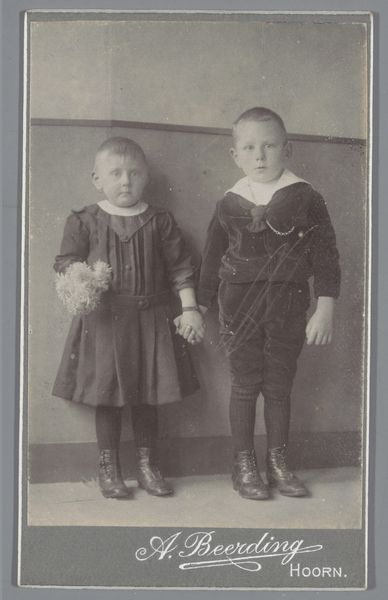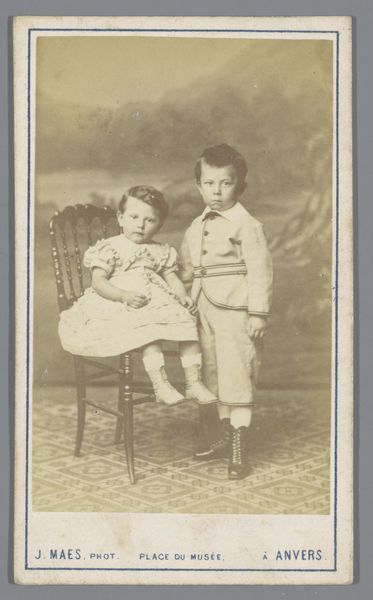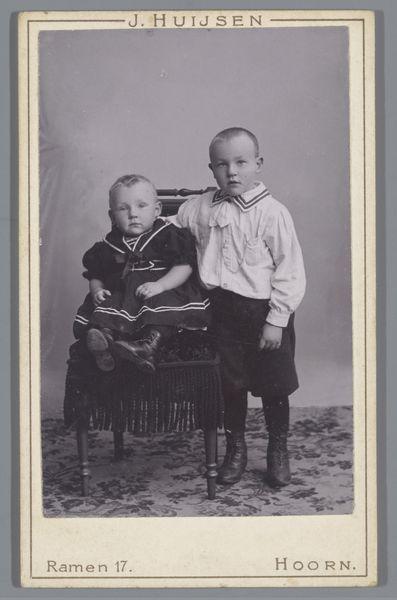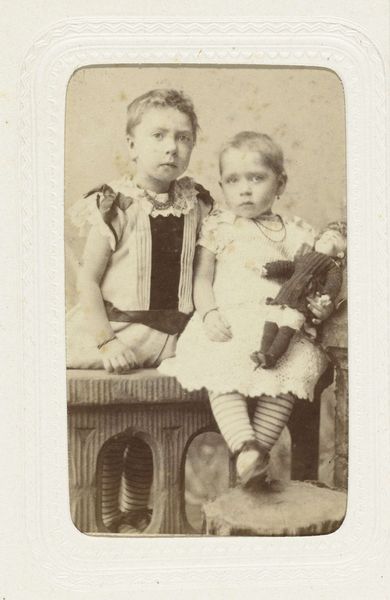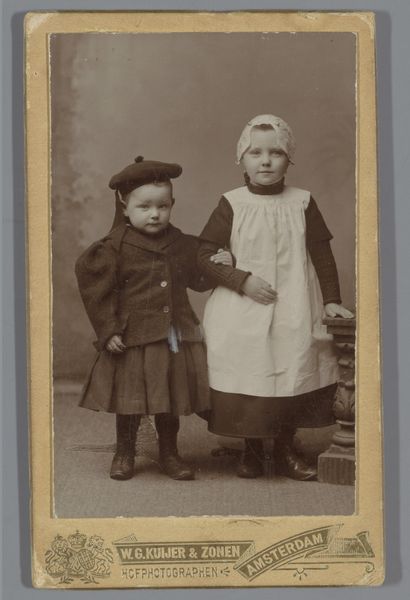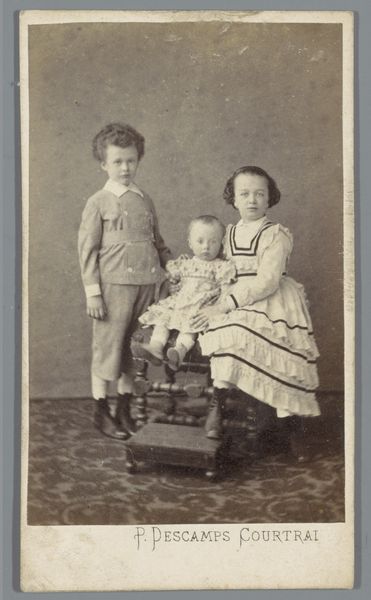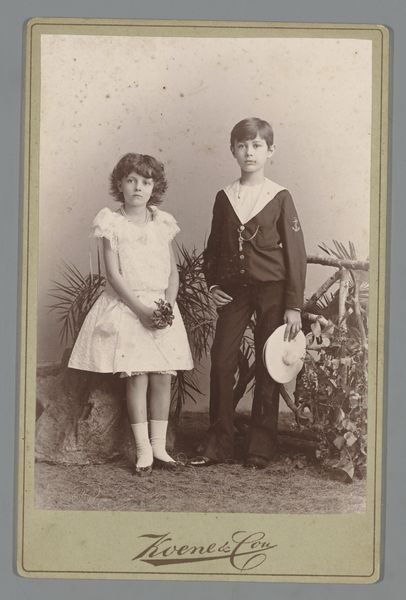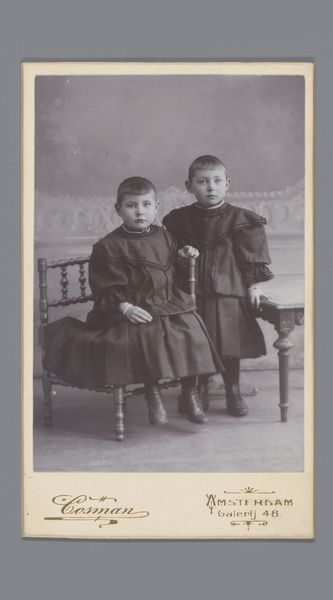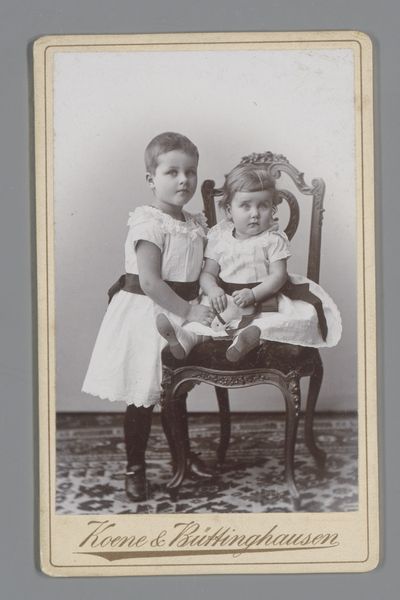
print, photography
#
portrait
#
pictorialism
# print
#
photography
#
historical fashion
#
genre-painting
#
realism
Dimensions: height 104 mm, width 65 mm
Copyright: Rijks Museum: Open Domain
Editor: Here we have a photographic print titled "Portret van twee onbekende kinderen," created sometime between 1890 and 1910 by Johannes Laurens Theodorus Huijsen. It feels very posed and formal, capturing these two children in a very deliberate way. As you look at this print, what compositional elements stand out to you? Curator: Immediately striking is the bilateral symmetry disrupted only by the subtle lean of the elder child. The geometry imposed by the photographer frames childhood not as a spontaneous event, but as a crafted construct. Semiotically, the girl's book, combined with the sailor suit of the boy, act as signifiers to specific societal roles of education and nascent military ambitions. Editor: So you're saying it's not just a portrait, but a commentary on societal expectations? Do you think the fact that it's a photograph influences our interpretation of it, compared to, say, a painting? Curator: Indeed. Photography, particularly during this era, had a peculiar relationship with truth claims. While appearing indexical, the formal staging – evident in the stark studio background and considered clothing – reveals the mediation inherent in the process. The photographic print, by Huijsen, operates within pictorialism by manipulating its seemingly ‘real’ subjects into a fabricated tableau of bourgeoise identity. How does the artist leverage tonal contrast in support of theme and composition? Editor: Well, the contrast seems pretty stark between the children and background which almost forces your focus. Perhaps Huijsen is deliberately creating depth by isolating the subjects? It seems almost sculptural to make them stand out and be the point of focus for us, the audience. Curator: Precisely. A strategy intended to heighten symbolic meaning, solidifying the subjects as studies within their separate roles. Editor: I hadn’t thought about it that way – seeing them more as constructed symbols through pictorial elements rather than just subjects of a portrait. Curator: Nuance resides in decoding that visual architecture and how they fit into period societal expectations.
Comments
No comments
Be the first to comment and join the conversation on the ultimate creative platform.


